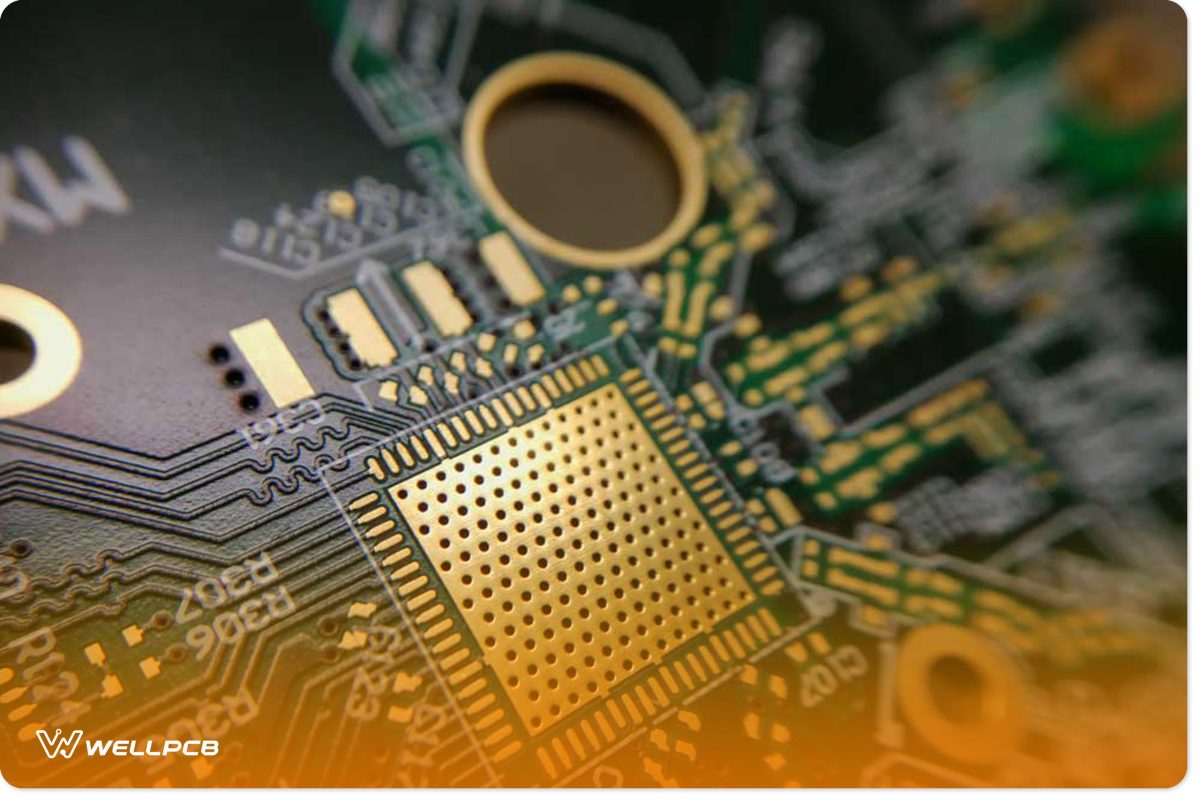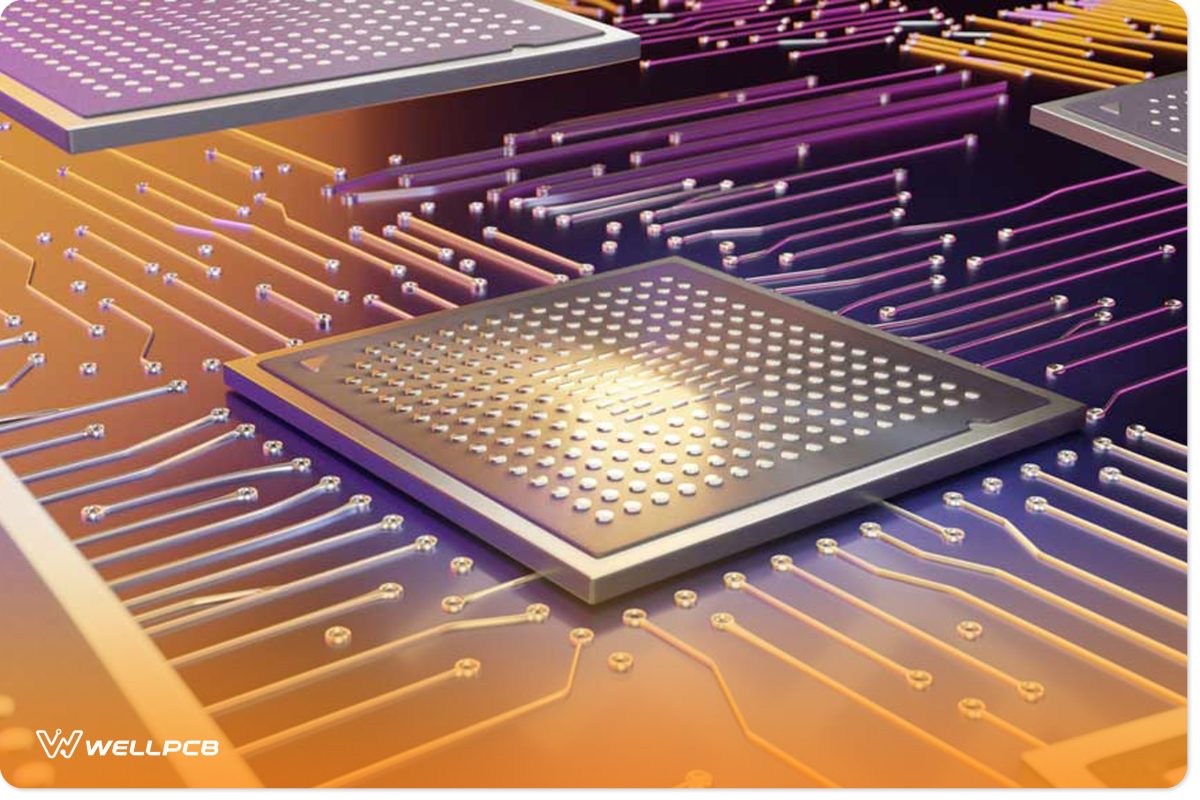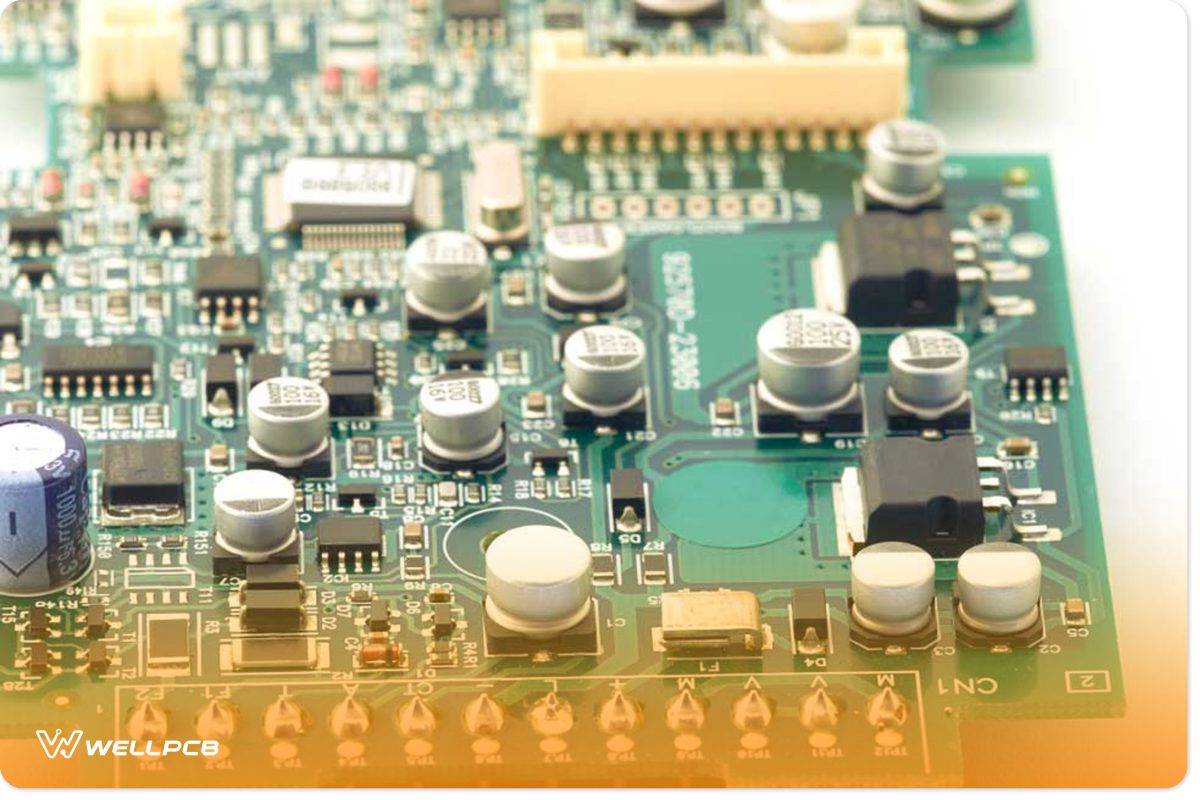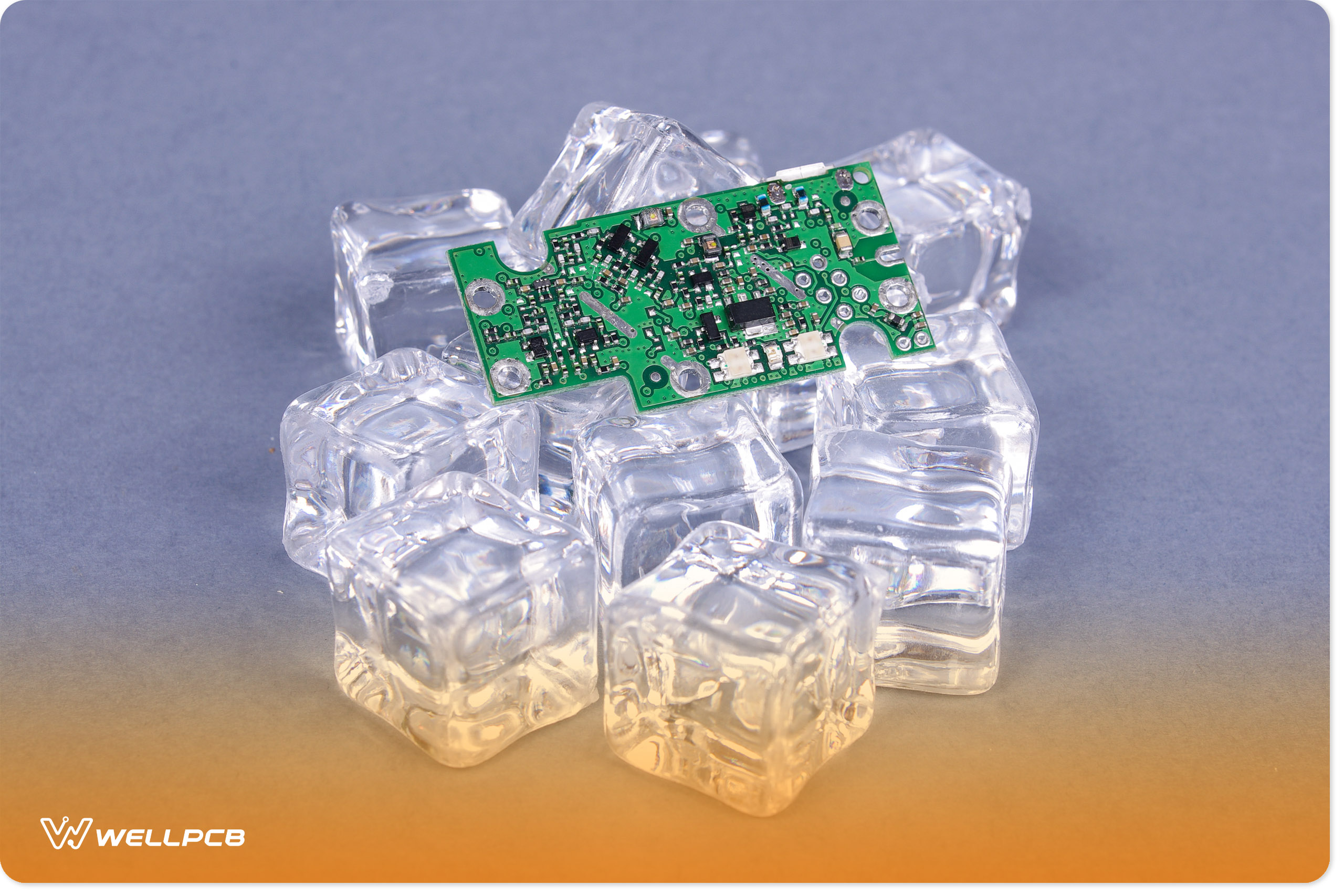Contents
- 1 What Is FR4 Material?
- 2 Why Is FR4 Used in PCBs?
- 3 FR4 Material Types
- 4 FR4 Material Thickness
- 5 Application of FR4 PCB
- 6 IPC-A-600 Standard for FR4 Materials
- 7 FR4 Materials Benefits
- 8 Limitations of FR4 Circuit Board Materials
- 9 Alternative PCB Materials
- 10 When is FR4 Not the Best Material For Your Board?
- 11 Factors to Consider When Choosing FR4 PCB
- 12 Summary
What Is FR4 Material?
FR-4 is a high-strength, high-resistant, glass-reinforced epoxy laminate material used to fabricate printed circuit boards (PCBs). The National Electrical Manufacturers Association (NEMA) defines it as a standard for glass-reinforced epoxy laminates.
The FR stands for flame retardant, and the number 4 differentiates this type of laminate from other similar materials. This particular laminate has woven glass-reinforced epoxy resin.
FR-4 PCB refers to the board manufactured with adjacent laminate material.
This material is incorporated in double-sided, single-sided, and multi-layered boards.
NEMA originally developed FR4 substrates in the 1960s, and many other companies now produce them.
Why Is FR4 Used in PCBs?

Macro close-up of the printed circuit board
In addition to being robust and stable, FR4 boards have good thermal properties and won’t warp or crack when you apply heat.
FR4 comprises two primary materials: epoxy resin and fr4 fiberglass. Fiberglass is a thin sheet, which gives it its structure, while epoxy resin laminate provides rigidity and other physical characteristics.
Combining these two materials results in a high-density board with good electrical properties, making FR-4 ideal for an insulator on printed circuit boards.
FR4 Material Types
FR-4, such as the standard FR-4 and G10, has many different variations depending on the thickness of the material and chemical properties.
The following list shows some common designations for FR4 PCB materials.
- Standard FR4: This is the most common type of FR4. It provides good mechanical and moisture resistance and a heat resistance of about 140℃ to 150℃.
- FR4 With High Tg: FR4 with high Tg suits applications requiring high thermal cycling and temperatures greater than 150℃. Standard FR4 is limited to around 150℃, while FR4 with high Tg can withstand much higher temperatures.
- FR4 With High CTI: FR4 with high CTI (Chemical Thermal Interaction) has better thermal conductivity than regular FR4 material. Its comparative tracking index is higher than 600 Volts.
- FR4 without copper laminate: FR4 is a non-conductive material with excellent mechanical strength. It is mainly suitable for insulating boards and board supports.
- FR4 G10: FR-4 G10 is a solid core material with excellent mechanical properties, high thermal shock resistance, dielectric properties, and good electrical insulation properties.

Printed circuit boards
Fr4 circuit board material consists of two layers: an inner layer of fiberglass and an outer layer of epoxy resin. Several fr4 properties, including:
Flame Retardant
Flame retardants are mixed with FR4 materials to make them more fire-resistant. The flame retardant treatments can be either organic or inorganic.
Organic treatments include halogen compounds such as bromine, chlorine, fluorine, and iodine, while inorganic treatments include aluminum trihydrate (ATH).
FR4 materials are treated with these compounds to make them more fire-resistant.
Good Electrical Properties
FR-4 has a glass-reinforced epoxy laminate. This material has good electrical properties, strength, stiffness, and high thermal resistance.
Low Moisture Absorption
FR4 material has a low moisture absorption rate, so it does not change shape when exposed to high humidity.
This makes it ideal for applications where exposure to moisture is likely, such as electronic devices and other electrical components.
FR4 Material Thickness
The thickness of FR4 material is an essential factor when choosing a circuit board fabricator. However, your design is limited in its ability to be thin or thick.
The standard FR4 PCB thickness is about 0.2 to 3.2mm and varies from product to product.
Application of FR4 PCB

3D Rendering of MCUs and circuit traces
Some common uses for FR4 include:
- Industrial Wear Applications
- Screw Terminal Strips
- Electrical Insulation
- Arc Shields
- Transformers
- Busbars
- Washers
- Standoffs
- Switches
- Relays
IPC-A-600 Standard for FR4 Materials
IPC-A-600 is a standard that covers the requirements for fabricating printed circuit boards using rigid and flexible FR4 materials.
The standards relate to the base material’s surface and subsurface. They apply to all sites involved in manufacturing, testing, and inspecting FR4 materials.
FR4 Materials Benefits
FR4 is a general-purpose laminate material with excellent mechanical and electrical properties. High mechanical strength, good dielectric properties, and thermal stability make it suitable for many applications.
This material is resistant to heat, chemicals, moisture, and most solvents.
Other benefits of FR4 materials include:
- FR4 is a low-cost alternative to other similar materials
- It has a high dielectric strength, which helps its electrical insulation properties.
- The material is lightweight and has a high strength-to-weight ratio.
- It is moisture-resistant and has relative temperature resistance as well.
- FR4 is water resistant and is suitable for various PCB applications.
- Standard Fr4 PCB thickness is only about 0.2 to 3.2 mm
All these properties make it ideal in a variety of environments.
Limitations of FR4 Circuit Board Materials
Many products and industries use FR4 circuit boards. However, when using them in your projects, you need to be aware of some limitations to FR4 circuit boards.
Insulating Stability
FR-4 Boards are excellent insulators, but they can be damaged if overstressed. The same occurs if a high temperature or excessive electric current passes through the circuit board.
This can make the circuit boards fail and stop working correctly.
Controlled Impedance
The dielectric constant of FR4 is not uniform like those of high-speed board materials. Dk varies as frequency increases.
High-speed materials have dielectric constant tolerances of less than 2%, whereas FR4 has up to 10% tolerances. This challenges impedance values for controlled impedance boards.
Signal Losses
Signal loss is essential to PCB design, particularly in high-frequency applications.
FR4 isn’t the best material for these applications since it has a more wondrous Df (dissipation factor) than high-frequency materials.
Temperature Stability
The main limitation of FR4 circuit boards is that they cannot withstand extreme temperatures.
The surface temperature of FR4 can reach a specific limit, but if it increases above this level, the circuit board material may be damaged.
Alternative PCB Materials
FR4 is not the only material used for PCB manufacture; there are also other materials, such as:
- FR5 (High Tg FR4)
- Teflon
- Polyamide
When is FR4 Not the Best Material For Your Board?
FR4 is a good choice for your circuit board because it’s relatively cheap, easy to work with, and versatile.
However, there are some cases where you should consider an alternative material, including:
- If lead-free soldering is required, an FR4 copper-clad board is a better option as it doesn’t contain lead.
If you need high dielectric strength or thermal stability, use a glass-reinforced panel instead of FR4.
Factors to Consider When Choosing FR4 PCB

The electronic circuit board
It would help if you considered many factors when choosing an FR4 PCB. The most crucial factor is the quality and durability of the product.
Many manufacturers sell their products at affordable prices, but they do not guarantee their quality.
You should always check as many reviews as possible before buying an FR4 PCB board from any manufacturer. Here are other factors to consider:
The Thickness of Sheet
The thickness of the sheet determines the number of layers you can have on your board. Thicker sheets last longer for higher-layer boards.
Impedance Matching
Impedance matching is essential for any electrical circuit because it ensures that all parts of your course work together correctly without interference.
Spacing
The spacing between the copper traces on a board determines how much current can flow through each copper trace.
The more closely spaced they are, the lower your board’s current carrying capacity will be.
FR-4 Material vs. Rogers Material
- There is a significant cost difference between Rogers and FR-4 materials.
- Compared with FR-4 material, Rogers material is excellent at handling high frequencies.
- The signal loss caused by FR-4 is higher than that caused by Rogers material due to its higher Df or dissipation factor.
- Regarding impedance stability, Rogers material has a broader range of Dk values than FR-4.
- Rogers material has a dielectric constant between 6.15 and 11, while FR-4 has a dielectric constant of about 4.5.
- Rogers material has less variation in temperature than FR-4 material.
Summary
FR4 is a material with many advantages. With its low weight, high strength, and resistance to fire and chemicals, it’s no wonder that it has become so popular in manufacturing.
If you’re looking for an FR4 manufacturer of printed circuit boards or boards of any other material, WellPCB can help.
We supply high-quality boards and circuits in any quantity while maintaining quality and on-time delivery.
Finally, if you have any questions about your PCB projects or whether the F4 material is the right fit for your needs, feel free to contact us or leave a comment below.





